Monteriggioni: A Medieval Walled Town In Tuscany, Italy
Monteriggioni is a beautiful medieval walled town located in Tuscany, Italy.
Nestled in the province of Siena, this small town is perched atop a natural hillock, offering a commanding view of the surrounding Chianti region.
It is surrounded by the charming towns of Casole d’Elsa, Castellina in Chianti, and Siena.
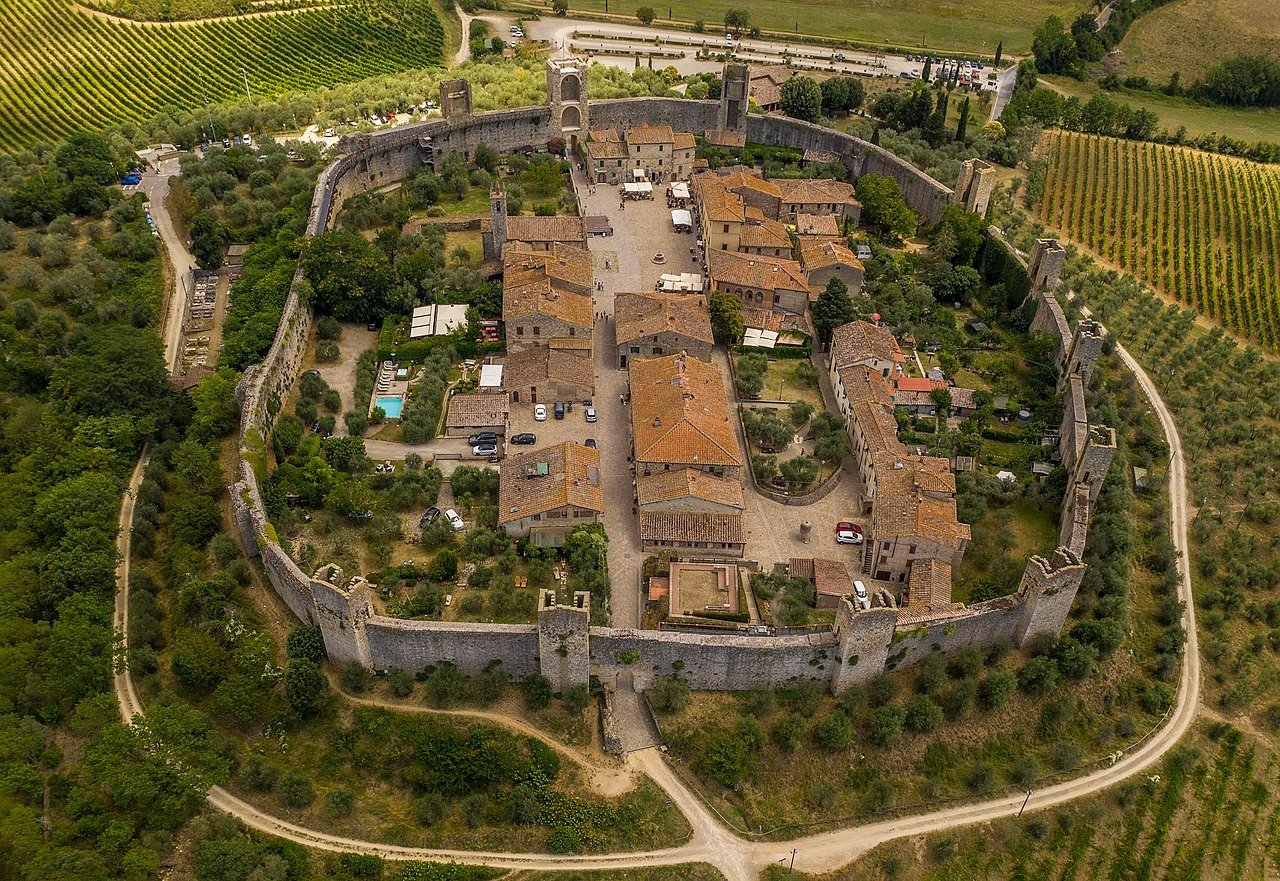
Monteriggioni is a medieval walled town in Tuscany
Monteriggioni was built by the Sienese between 1214 and 1219 on a natural hill.
It was a strategic fortification in their battles against Florence.
The town controlled the Via Cassia, a crucial trade and military route running through the Val d’Elsa and Val Staggia.
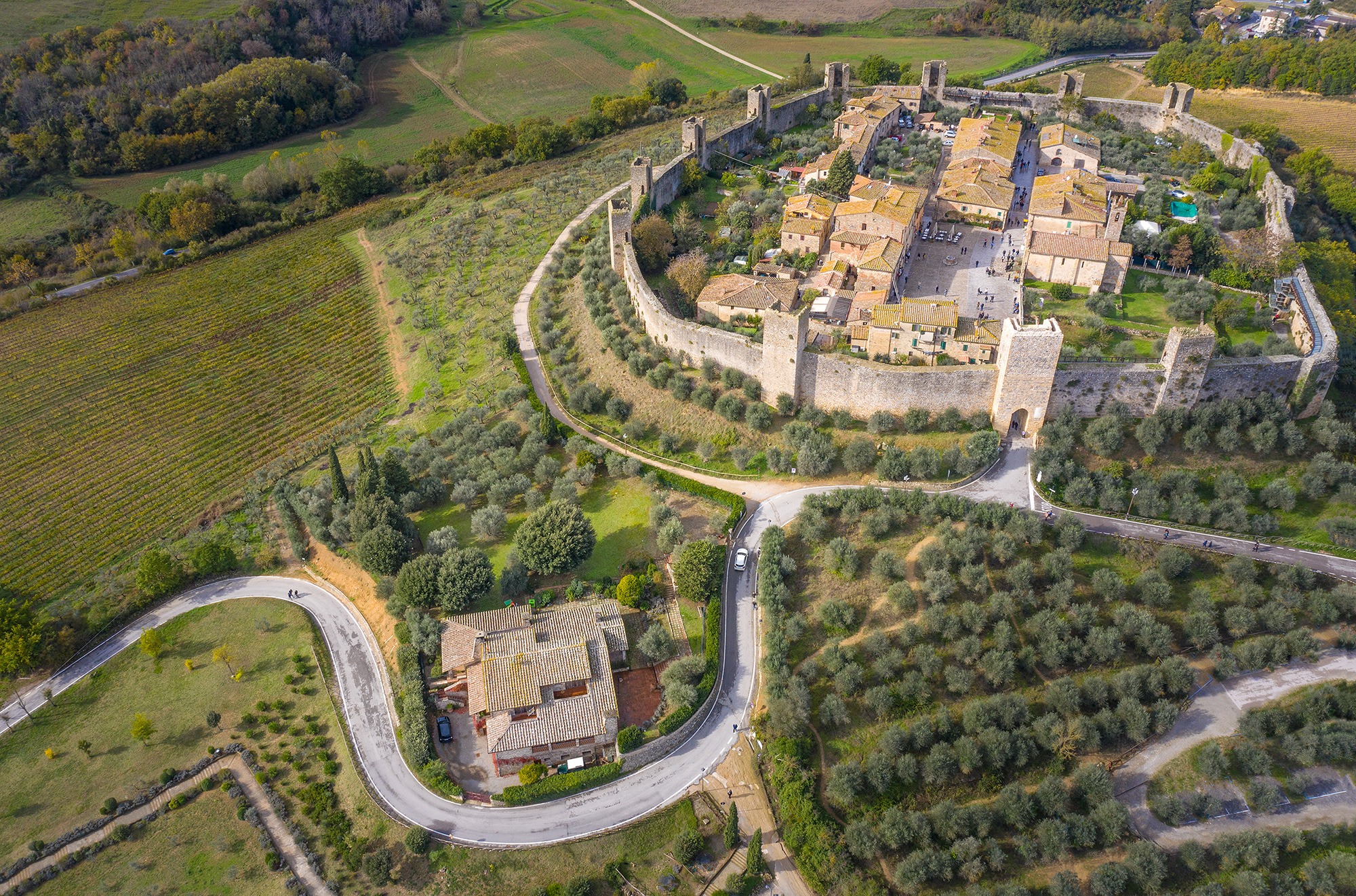
Throughout the Middle Ages, Monteriggioni endured many attacks from Florence and the Bishop of Volterra.
In 1554, during a reconciliation with the Medicis, the town’s garrison commander, Giovannino Zeti, handed the town over to Medicean forces, which the townspeople saw as a betrayal.
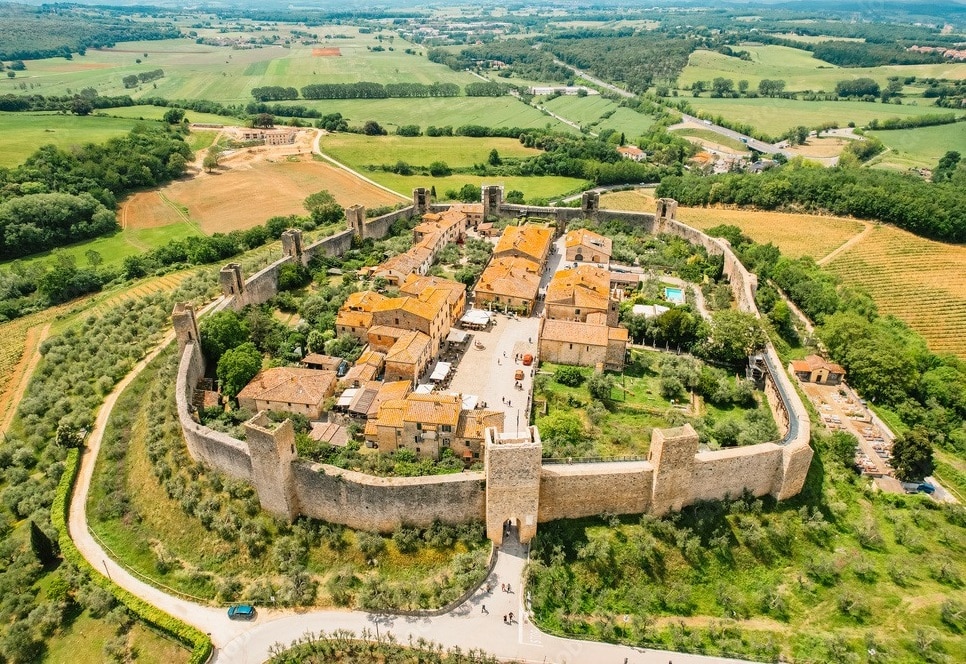
What is Monteriggioni Famous For?
Monteriggioni is renowned for its remarkably preserved medieval walls and towers.
The town was constructed between 1213 and 1219.
It is encircled by roughly circular walls stretching approximately 570 meters (1,870 feet) around the town, following the natural contours of the hill where it was built.
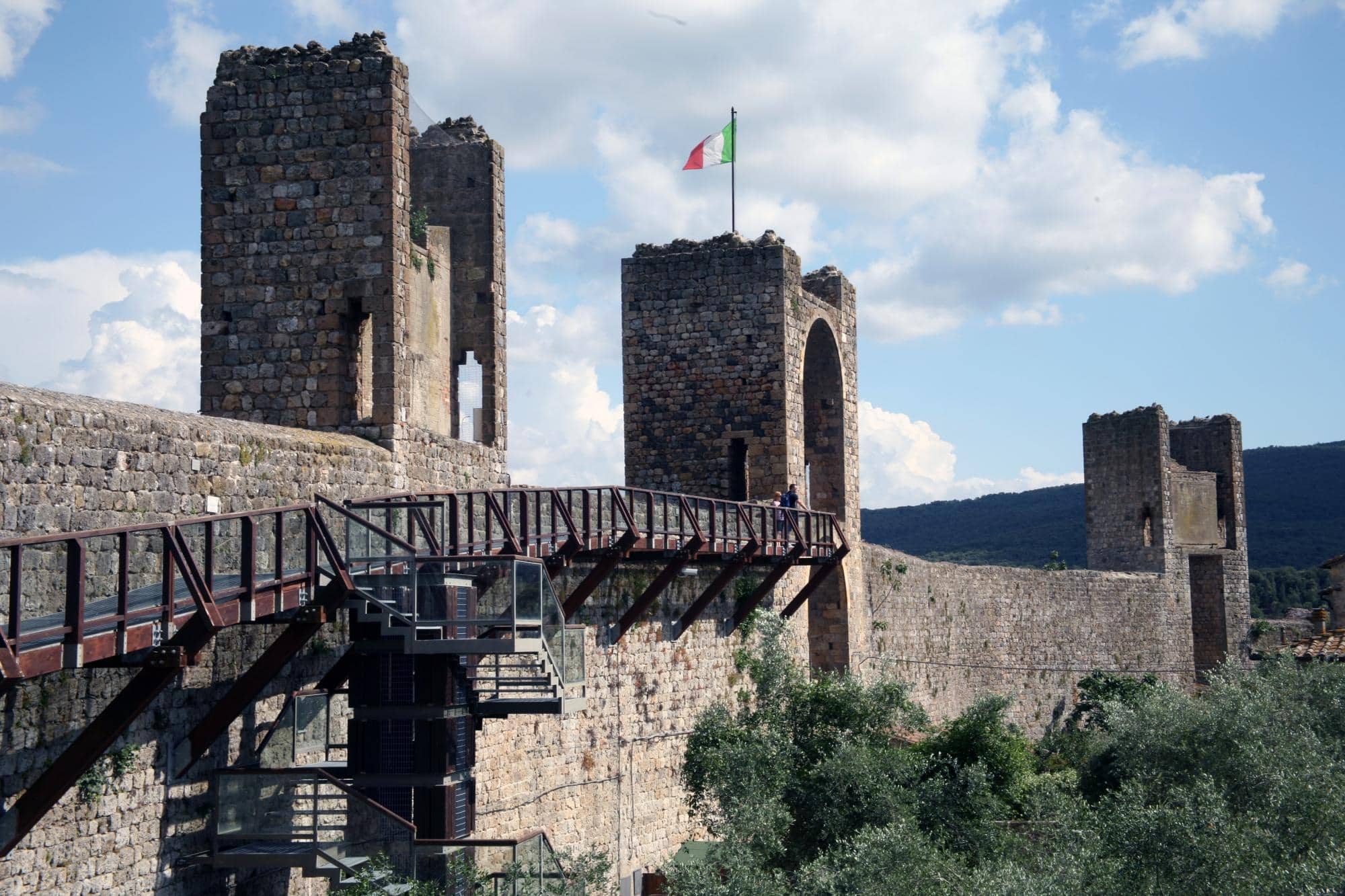
Fourteen square-based towers are spaced along the walls, creating a formidable defensive structure.
There are two main gates: Porta Fiorentina, opening toward Florence to the north, and Porta Romana, facing Rome to the south.
The main street inside the walls connects these two gates.
Monteriggioni’s Gates
Visitors entering Monteriggioni pass through one of its two main gates: the Porta Fiorentina, which faces north towards Florence, or the Porta Romana, which faces south towards Rome.
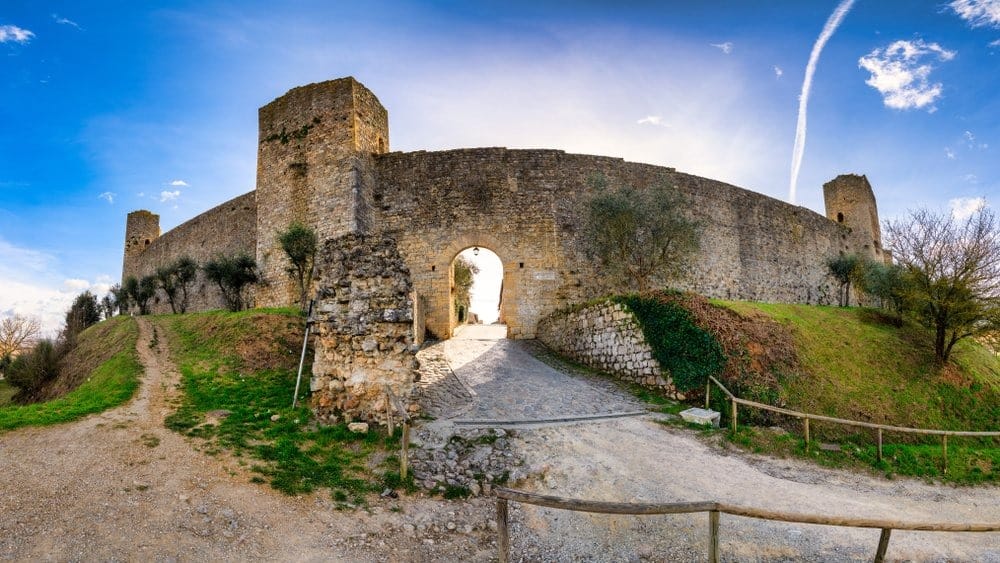
Inside these gates, the town retains its medieval layout and charm, with narrow streets, ancient buildings, and a central piazza.
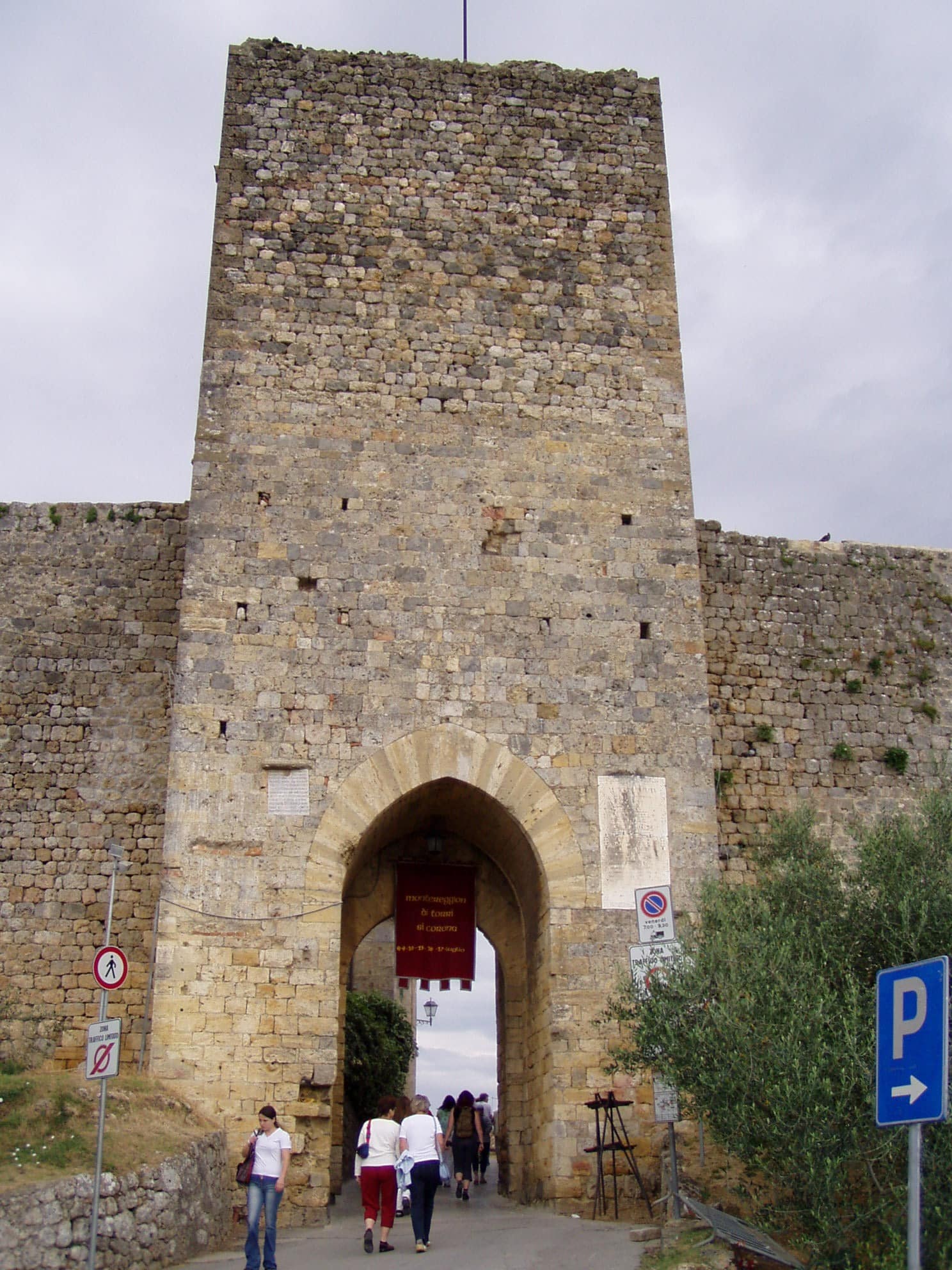

Central Square and Surroundings
Piazza Roma, the main square, is home to a simple yet beautiful Romanesque church: Pieve di Santa Maria Assunta.
The church, built in the 13th century, has a beautiful and simple facade that reflects the clean and elegant style of the time.
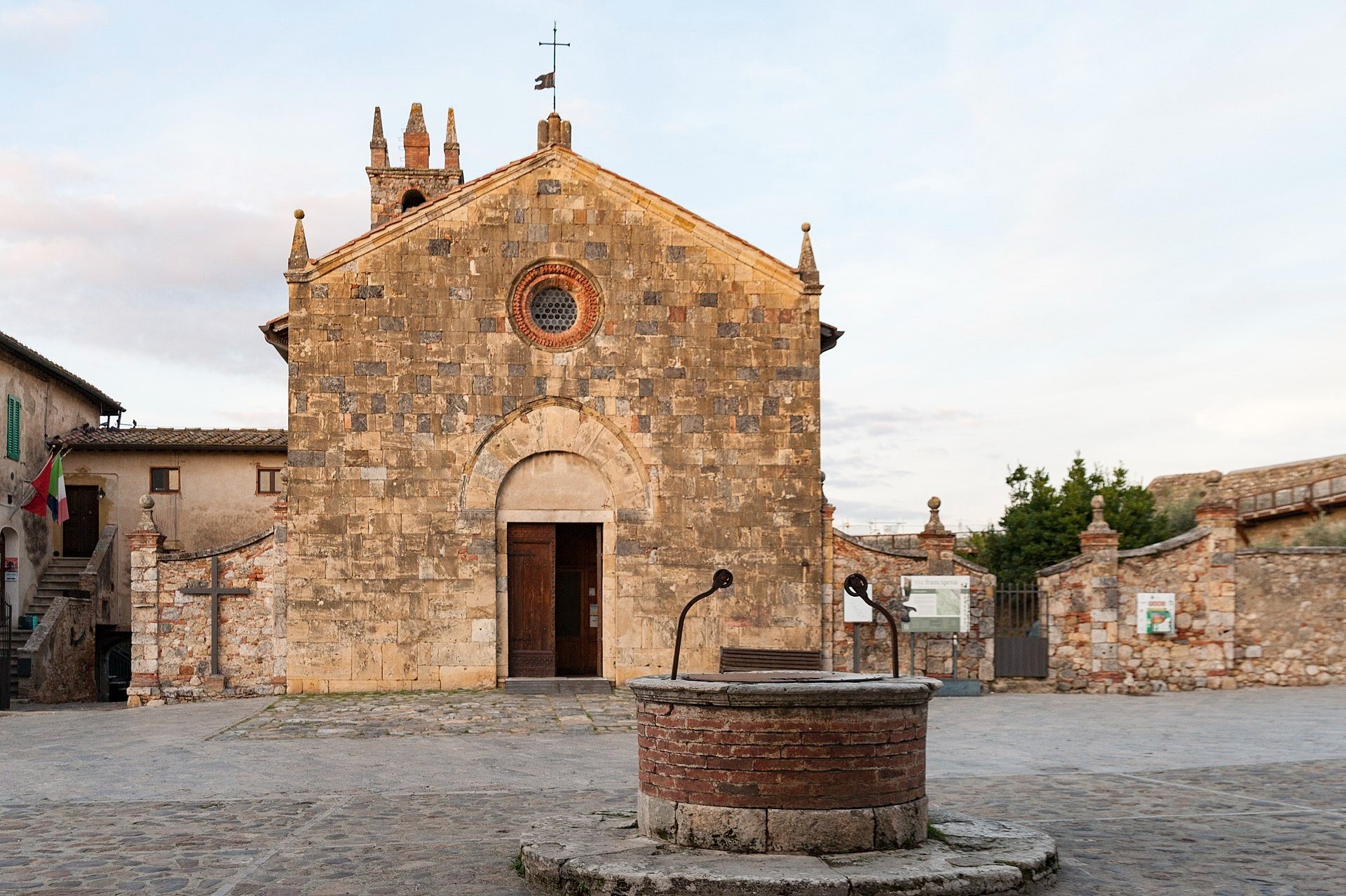
The square also features the interesting Medieval museum, ‘Monteriggioni in Arme.’ Normally, visitors can touch and wear the armor, but this is currently not allowed due to health and safety protocols.
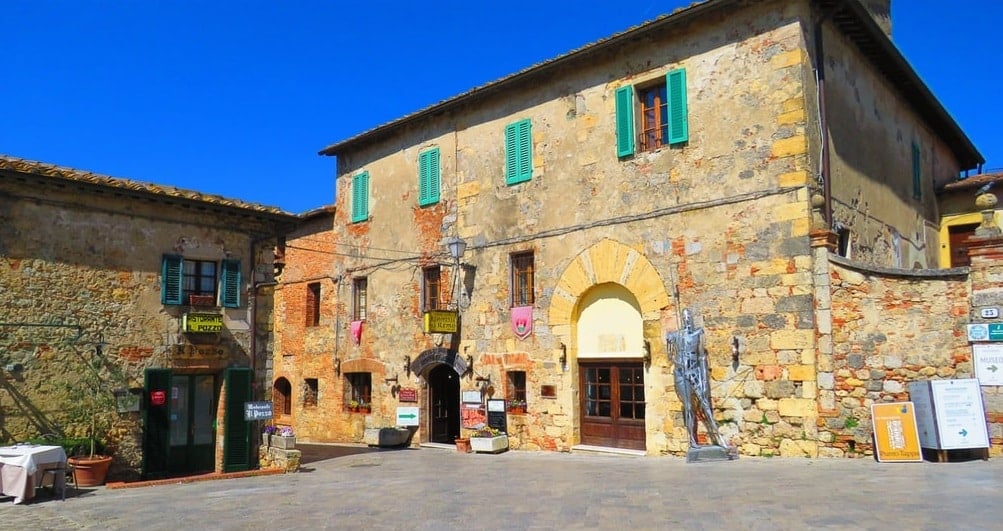
Surrounding the piazza are Renaissance-style houses that once belonged to nobles and wealthy merchants.
Smaller streets lead to public gardens that were essential during sieges.
These gardens, along with the medieval buildings, create a peaceful and picturesque setting.
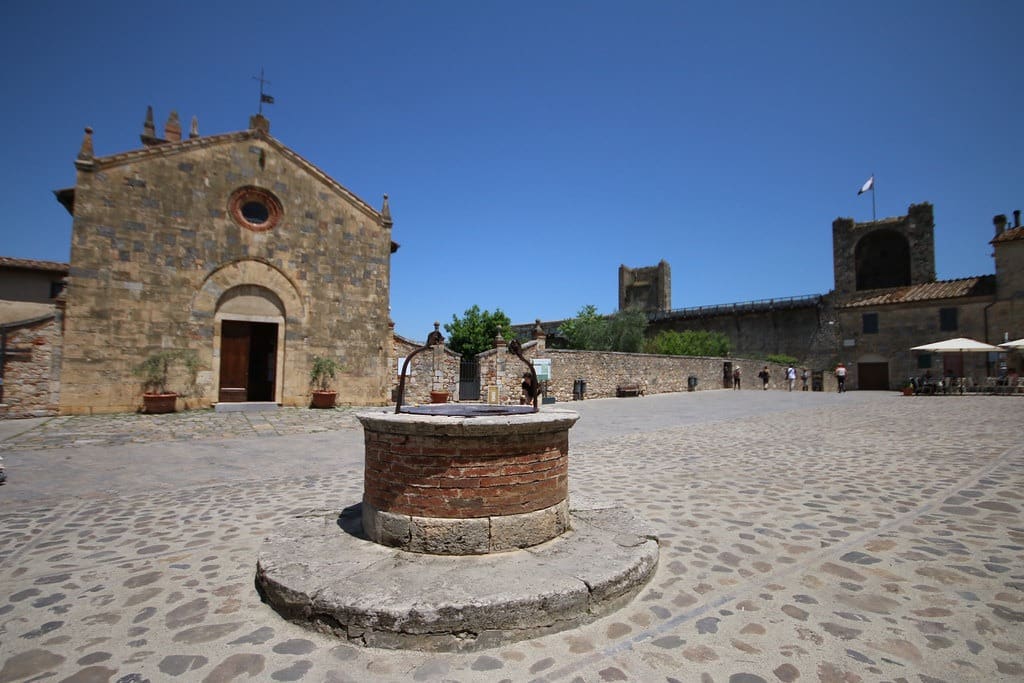
Monteriggioni and the “Divine Comedy”
Monteriggioni holds a special place in literary history thanks to its mention in Dante Alighieri’s “Divine Comedy,” one of the most famous works of Italian literature.
In the “Inferno” section, Dante compares Monteriggioni’s walls and towers to the giants standing around the edge of Hell.
Dante specifically refers to the town in Canto XXXI, lines 40-45, where he writes:
“As with circling round
Of turrets, Monteriggioni crowns his walls;
E’en thus the shore, encompassing the abyss,
Was turreted with giants, half their length
Uprearing, horrible, whom Jove from heaven
Yet threatens, when his muttering thunder rolls.”
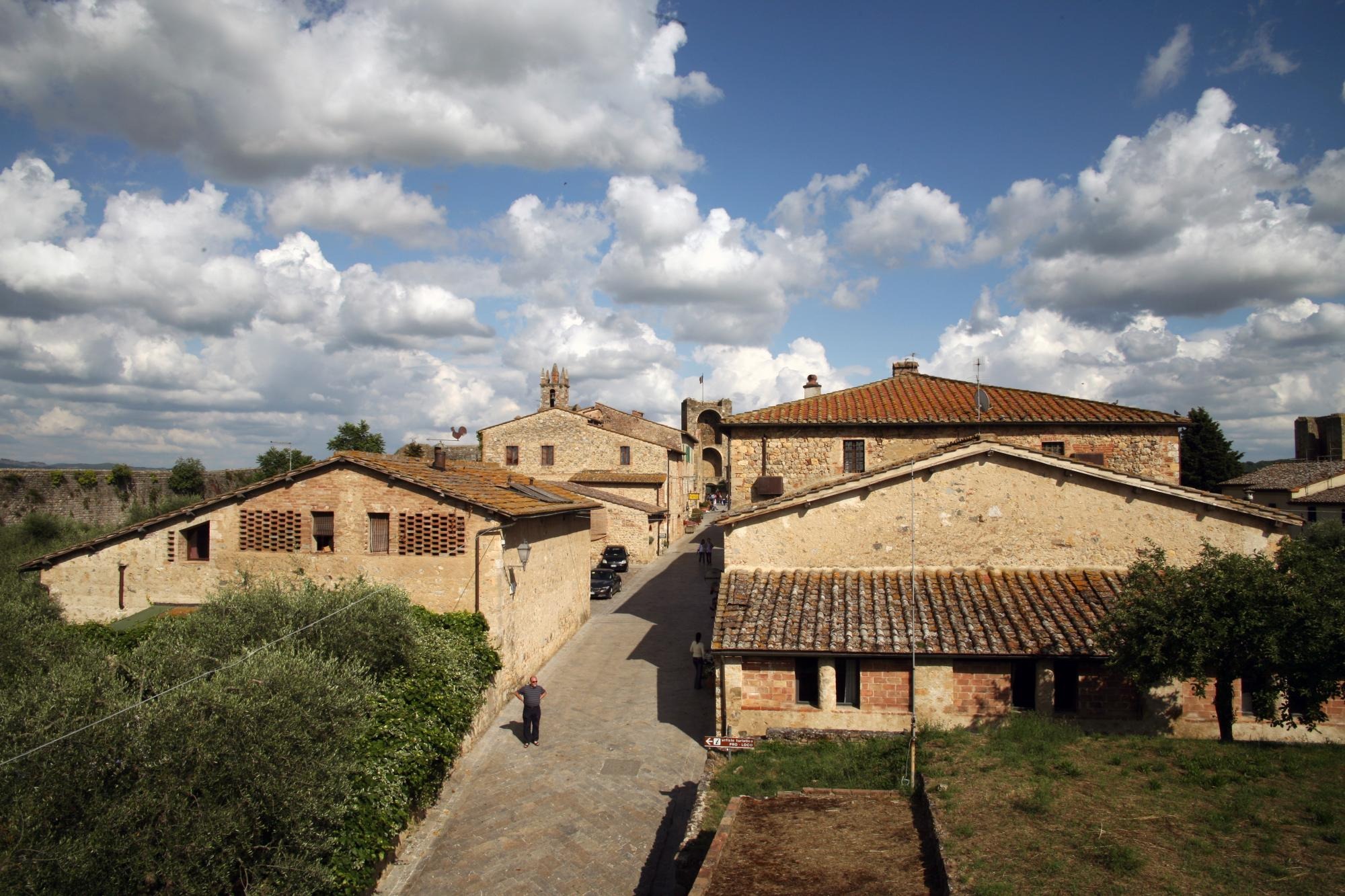
In these lines, Dante uses Monteriggioni’s tall towers to describe the giants guarding the entrance to the lowest parts of Hell.
This comparison shows how impressive and intimidating Monteriggioni’s fortifications were.
Is the Auditore Villa Real?
The Auditore Villa, known as Villa Auditore, is a fictional creation featured in the “Assassin’s Creed” video games, particularly “Assassin’s Creed II” and “Assassin’s Creed: Brotherhood.”
In the games, the villa is the home of the protagonist, Ezio Auditore, and his uncle, Mario.
While the villa itself is not a real historical building, it is inspired by the architecture and atmosphere of Renaissance Italy.
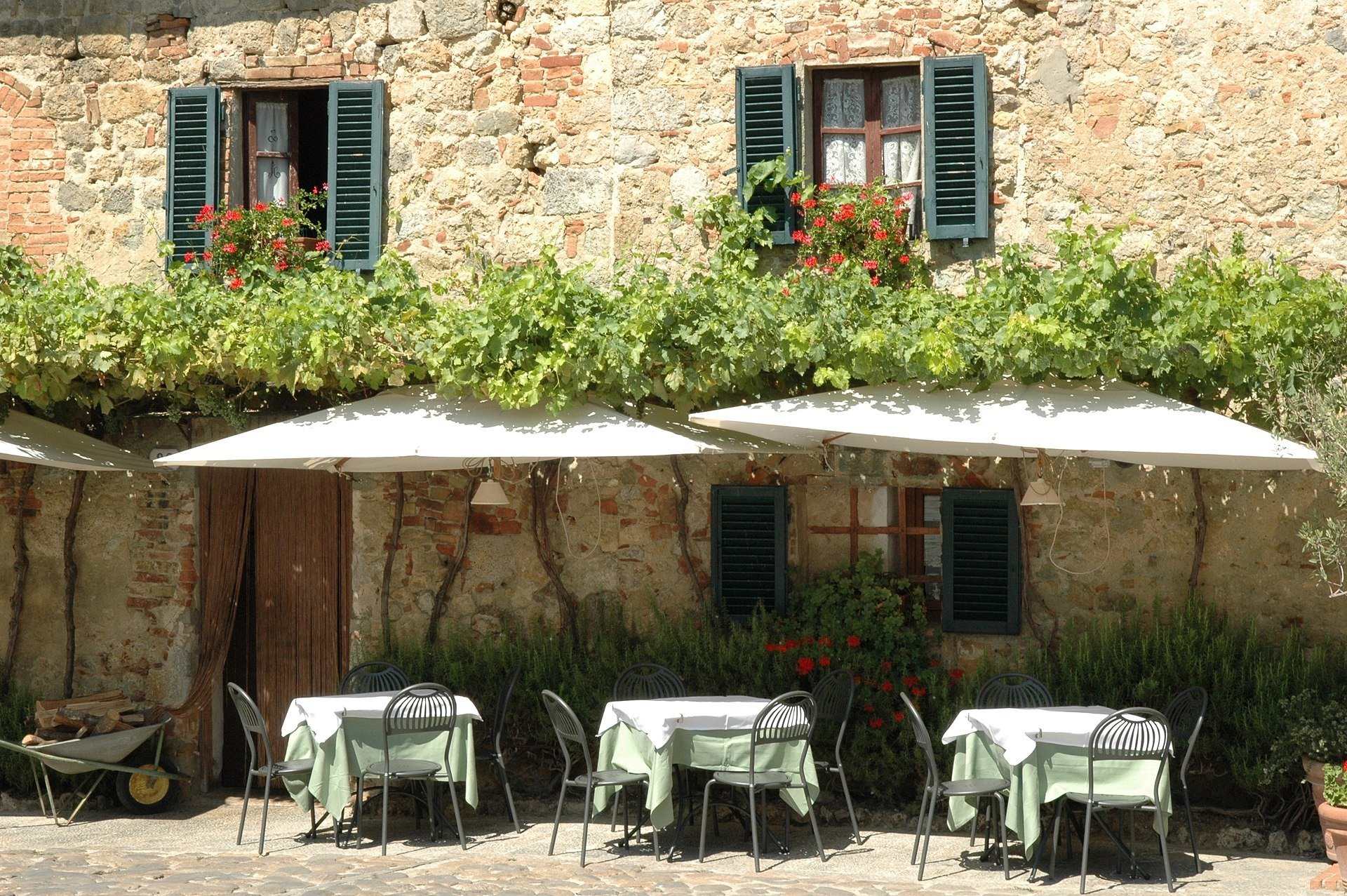
However, Monteriggioni, the setting for Villa Auditore in the games, is a real medieval town.
Its real history and well-preserved buildings made it a perfect location for the game’s story.
The inclusion of Monteriggioni in the “Assassin’s Creed” series has brought additional attention and interest to this charming Tuscan town, bridging the gap between historical reality and popular culture.



